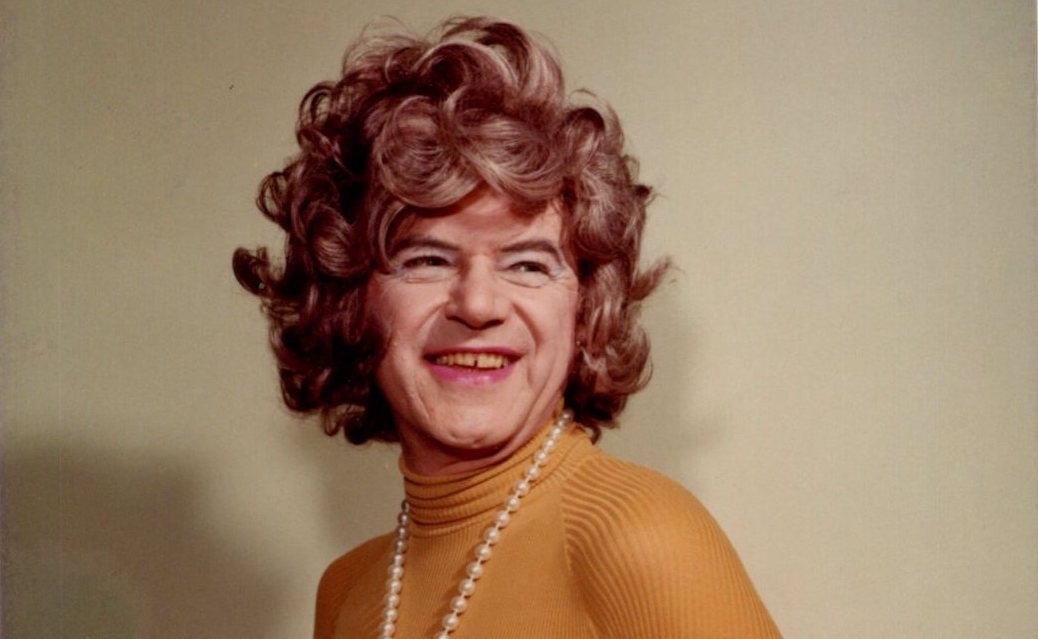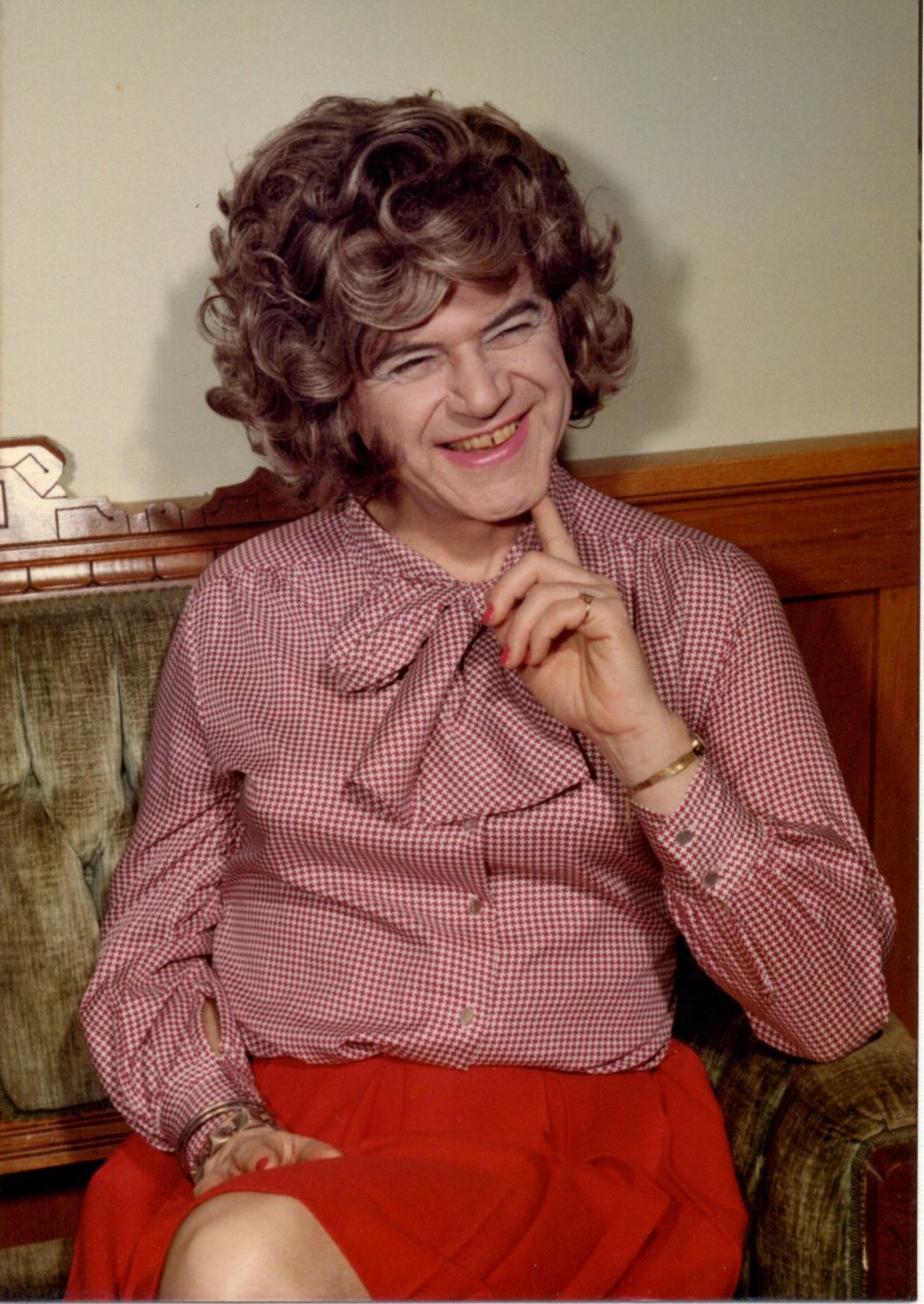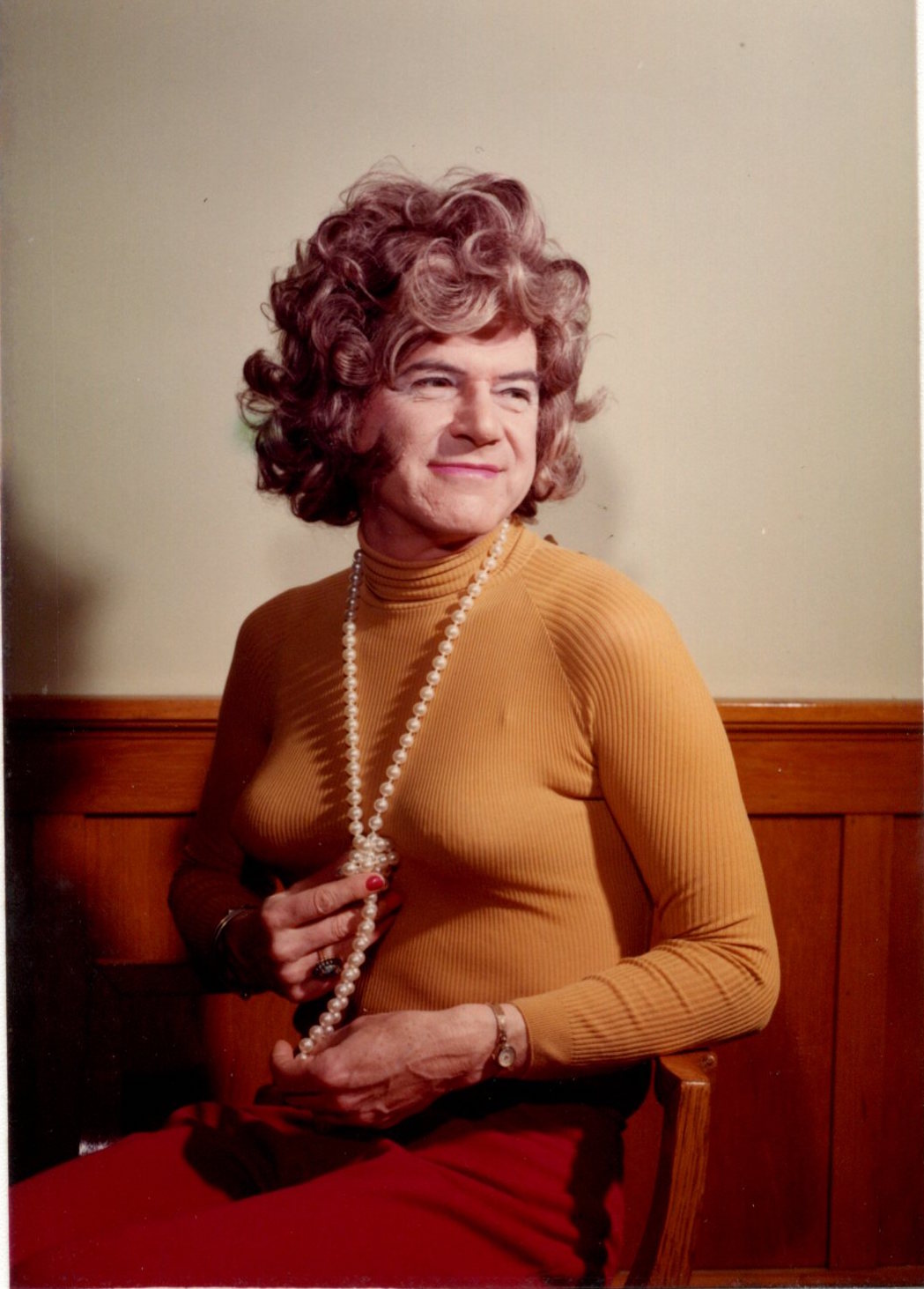
It’s time Ames was recognized for her role in the transgender activism movement.
Peggie Ames is, quite possibly, the most important transgender activist you have never heard of. Ames, who died in 2000, dealt with issues that remain relevant within contemporary feminist and LGBTQ social movements. She played a significant role in the Mattachine Society of the Niagara Frontier (MSNF), Buffalo, New York’s first gay liberation organization, though her membership was viewed with suspicion by some members of the gay community. Ames identified as a lesbian and experienced rejection by portions of Buffalo’s lesbian feminist community who saw her womanhood as suspect. Most importantly, she created a blueprint for trans activism in rural communities and mid-sized cities.
Ames was assigned male at birth when she was born in 1921, in Buffalo, New York, and her journey to self-identification was similar to other trans women of her era. From childhood she sensed she was “different.” She dressed in her mother’s and sister’s clothes and borrowed their cosmetics when alone. She enrolled in college and joined a fraternity in an attempt to fit in with her male peers. She married and had a child before being drafted into the Air Force during World War II. Honorably discharged a year later, she completed dual degrees in Business and Psychology at the University of Buffalo, opened an insurance business, and had three more children. All this time, she dressed as Peggie in secret, fearing discovery by her family and friends.
In the Cold War era, gays and lesbians were persecuted within the federal government and American society, and trans issues were virtually unknown outside of medical circles where they were highly pathologized. Ames found a role model in Christine Jorgensen, the first trans celebrity who brought the concept of “sex change” to the forefront of American consciousness. Ames followed her story in the media and observed that, although the well-dressed and witty Jorgensen was celebrated by some, many saw her as little more than a freak. Therefore, she hid her true self in what historian David Serlin refers to as “the Cold War closet.” She did not even learn the word “transsexual” until 1973.
That year, on a day when she was home alone, she fell asleep on the living room sofa, and her wife returned to find Peggie, not the husband she thought she knew. Now that Peggie was “outed,” Ames decided to live full time as who she was. The couple initially discussed living together platonically as two women, but Ames’ wife, a deeply religious woman, could not reconcile the fact that Peggie identified as a lesbian. Her children took the news even harder, effectively cutting her out of their lives and denying her access to her eight grandchildren. Ames’ second-eldest son, Daryll, committed suicide after community members harassed him about Ames’ transition, and he left behind a note citing her as the reason he took his own life. It would be years before Ames’ eldest son and her daughter, Marsha, would make tentative contact.
Ames and her wife divorced in 1973, and she struggled financially for the remainder of her life. To support herself she opened a furniture refinishing and antique restoration business that she operated out of her barn, and taught adult education courses on woodworking. The rural community of Clarence Center treated her much as her family did. In a letter, written to a lover in 1974, she described the harassment she faced:
Boys ran by the house last night screaming, ‘Peggie, you fucking faggot.’ The police won’t come. Last year the state trooper laughed in my face. Everyone tells me the only solution is to sell. They just want to get rid of this pest, this insidious blemish on their lives and community, this freak, this fucking faggot, this queer who is infecting their lives like poison like cancer. It is becoming too much.
Yet, Ames pressed forward with her transition. After consulting with doctors at the Harry Benjamin Foundation in New York City, she underwent sex reassignment surgery in 1974, which at the time cost around $8,000. She saw the same doctors as tennis player Renée Richards, one of the first out trans athletes.

Ames understood the importance of advocacy to fight gender and sexual discrimination. In 1970 she joined the Mattachine Society of the Niagara Frontier. MSNF incorporated as a non-profit organization in May of 1970 largely to address the targeting and closure of gay bars by the Buffalo Vice Squad. MSNF took the name of an earlier homophile organization, founded in Los Angeles in 1950, though in belief and practice they were more similar to the gay liberationist organizations, such as New York City’s Gay Activists Alliance (GAA), that emerged in the post-Stonewall period.
Ames was elected secretary of MSNF — a somewhat unusual position for a trans person to hold within a gay liberation organization at this time — in 1973 and 1974 and was praised for the efficiency and skill with which she performed her duties. Buffalo was, in the words of longtime gay rights activist Madeline Davis, “a Rust Belt city on the edge of the Midwest.” MSNF’s membership was comprised of both college-educated professionals and blue-collar workers. The group, as such, was less concerned with the politics of respectability present in other post-Stonewall gay rights organizations in large cities and could therefore make room for a white college-educated trans woman such as Ames to occupy a position of leadership. Gay liberation organizations in large cities, such as the GAA, whose membership was comprised primarily of white college-educated men, often espoused a militant politics of liberation but did not allow gender non-conforming people to represent the organization in the press, and were reluctant to fund their causes.
Ames also participated in MSNF’s peer counselor training program, organized panels on transsexualism for Buffalo’s annual Gay Pride Week, and joined MSNF’s Speakers Bureau. In a 1978 profile of Ames written for the Courier-Express, a Buffalo morning newspaper, she estimated that she had lectured to around 12,000 people on the topic of transsexualism, primarily medical, nursing, and Psychology students at the University of Buffalo and other area campuses. According to Carole Hayes, a feminist psychologist who, from 1977 to 1979, taught an adult education course at the State University of New York at Fredonia called “Changing Lifestyles,” Ames was a brilliant speaker and often began her lectures by throwing a bag of rocks on the table to get the audience’s attention. “I need you to listen and understand what I’m going to tell you,” she would say, “because I have rocks thrown at me just for being who I am.” Students often wrote in their course evaluations that Ames’ presentation was the most informative and impactful part of their semester. Contemporary trans people still navigate medical gatekeepers to access transition-related care, but educational efforts by activists such as Ames brought about vast changes in the attitudes of medical professionals towards the transgender community.
Ames’ advocacy also had national reach. She was an established contact person for the Erickson Educational Foundation (EEF) and later, when the EEF folded in 1977, the Janus Information Facility, based out of the University of Texas. Established in 1964 by the independently wealthy trans man Reed Erickson, the EEF became the leading organization to fund research into transsexualism and to provide information and support to trans people in need of guidance. Trans people, particularly those from the Western New York area, who called the EEF for support were often referred to Ames for peer counseling or transition-related guidance. She maintained an extensive “pen pal” network with other trans women and (cisgender) lesbians whom she met via her EEF contacts, as well as through a lesbian correspondence service called The League.
Educational efforts by activists such as Ames brought about vast changes in the attitudes of medical professionals towards the transgender community. Click To TweetBy the late 1970s, Ames estimated she knew around 100 other transsexuals in the Western New York area, but she was one of few willing to be out in public. Though she faced great harassment for doing so, her physical presence helped to dispel common prejudices towards trans women. In her personal writings, she noted that while she admired Jorgensen and Richards, she had to forge her own path because, living in a rural community, her life was different from theirs in significant ways. Whereas Richards became a reluctant spokesperson after being outed by the press, Ames realized that staying quiet or closeted would do little to advance acceptance in her community.
Despite Ames’ activism, she was rejected by many members of Buffalo’s gay and lesbian community. Buffalo lesbian feminists, particularly the younger, more radical, lesbians associated with the University of Buffalo’s College of Women’s Studies, saw her as a threat to the local progress of women’s liberation. Ames was expelled from two Buffalo lesbian organizations. Gay Rights for Older Women (GROW) wrote her a letter stating they feared her presence would create an unsafe space that would compromise the organization as a whole. The women of GROW had trouble relating to Ames’ transsexual history and regarded her enthusiasm and outspokenness as evidence of her “maleness.” “Peggie just wanted to talk and talk about herself,” said Madeline Davis, “and many of the women saw that as an example of her ‘male energy.’”
Ames’ treatment reflected broader attitudes held by many lesbian feminists at the time. In 1973, Beth Elliott, a trans lesbian feminist folksinger, was forced to leave the West Coast Lesbian Feminist Conference (WCLFC), which she helped to organize. A radical feminist organization called The Gutter Dykes distributed leaflets proclaiming Elliott was really a man. Robin Morgan, the conference’s keynote speaker, amended her talk to address the ensuing controversy over Elliott’s participation, arguing that trans women reinforce patriarchal gender roles by taking on stereotypical signifiers of womanhood. Morgan further called Elliott “an opportunist, an infiltrator, and a destroyer — with the mentality of a rapist.” The anti-trans contingent of the WCLFC then insisted that a vote be taken as to whether Elliott could stay. When a majority of attendees voted to allow her to remain at the conference, the faction created such a fuss that Elliott gave a shortened musical performance and then left voluntarily.
Ames was also rejected by Buffalo lesbians due to her preference for a “high femme” 1950s style of dress at a time when feminists were challenging gender roles by eschewing traditionally feminine garb. Ames’ skirts, hot pants, makeup, and open-toed heels were construed as evidence that she did not fit into the feminist movement. But Ames, who transitioned at age fifty-three, was simply, finally, living as herself and exploring the woman she was not allowed to be during the first four decades of her life. Her age made her ever conscious of her desire to experience life to the fullest. Though some members of GROW perceived her femininity as antiquated and oppressive, her feminism may have been ahead of its time due to her stubborn insistence of trans women’s inclusion.
She noted that while she admired Jorgensen and Richards, she had to forge her own path because, living in a rural community, her life was different from theirs in significant ways. Click To TweetGay men, too, regarded her as a curiosity, and many did not understand the relevance of trans issues to gay rights. Ron Brunette, a former member of MSNF, speculated that Ames was tolerated, in part, due to her friendship with Jim Haynes, a prominent and well-respected gay rights activist and founding member of MSNF, and his partner, Don Licht. “The atmosphere around her was mixed as people did not want to offend Jim Haynes,” Brunette said. “[Haynes’] friendship with Peggie created a shield that helped her. Was she accepted by most… No. Most accepted her because of Jim.” Ames also speculated that many gay men simply saw her as a drag queen, and while this false association produced a degree of tolerance, it ultimately erased her identity.
Ames was, however, able to form a relationship with Luella “Lu” Kye, a lesbian from Fredonia, New York, who she met at an MSNF meeting around 1974. The two began a romance that lasted for several years and they remained in touch until the late 1970s. “Everyone knew Lu was gay, but she didn’t care what anyone thought,” said Carole Hayes, a friend of Kye’s who invited Ames to lecture in her course upon Kye’s recommendation. Hayes further indicated that as a butch woman living in a rural community, Kye may have been more sympathetic to the ostracism Ames faced. Her acceptance of Ames also illustrates that some working-class lesbians living in areas without a “gay scene,” and who were not conversant in mainstream feminist thought, accepted trans women within their circles. Ames, in fact, listed Kye as a resource for local transexuals on a guide she prepared for MSNF’s Health Committee in 1976.
Despite the mistreatment Ames faced by both straight society and Buffalo’s gay and lesbian community, she was privileged in ways not shared by many of her contemporaries. She was white, college educated, and middle class for the first half of her life. Sylvia Rivera and Marsha P. Johnson, economically disadvantaged gender non-conforming people, were routinely targeted by law enforcement and marginalized within organizations like the Gay Liberation Front and the GAA. The multiple forms of “otherness” they embodied made them disrespectable in the eyes of the state and of white gay activists in a way Ames was not.

Ames’ work still resonates today. When MSNF disbanded in 1984, other organizations, such as Evergreen Health Services (formerly AIDS Community Services) and Gay and Lesbian Youth Services of Western New York (GLYS), more explicitly addresses trans concerns, and continue to do so to this day. Though Ames mostly withdrew from public advocacy after the early 1980s, she continued to educate and provide support via her correspondence, which allowed her to remain engaged while minimizing discrimination. The “pen pal” networks Ames, and other trans activists, created in the 1970s and ‘80s laid the foundation for the national and international communities trans people formed with the popularization of the internet in the 1990s, which contributed to a new wave of transgender activism. Ames’ belief that trans women should be included within feminist organizations and activism also anticipated the development of a unique trans-feminist perspective articulated by writers and activists such as Emi Koyama and Julia Serano in the late ‘90s and early aughts.
The ‘90s also saw the creation of the first transgender organizations in Western New York such as the Buffalo Belles and the Spectrum Transgender Group. In 2001, Camille S. Hopkins, the first out trans employee to work for the City of Buffalo, joined the organizing committee of Buffalo’s inaugural Dyke March, and was invited to speak at the end of the march. When Hopkins learned Ames’ story while being interviewed for an independent documentary film about the creation of the Dr. Madeline Davis LGBTQ Archive of Western New York, it provided her with a source of pride, inspiration, and strength. “I just wish I could have given her a hug,” Hopkins said, reflecting on the fact that, unlike herself, Ames was rejected by Buffalo’s lesbian community and had few role models to look to.
Ames’ life and work, most importantly, illustrate that effective activism in mid-size cities and rural towns, where people are more closely knit, involves creating change through building human relationships—such as those formed by her lecturing, correspondence, and work as a counselor—over large-scale direction action protests and civil disobedience. It’s a principle that remains true today.
Ames never did leave her historic nineteenth-century house, built in 1835, despite the pervasive mistreatment she faced. In refusing to be cast out, she turned the rocks, the tools of oppression, thrown at her into tools of education and change. “Three words that come to mind when I think of Peggie Ames are ‘Brave,’ ‘Strong,’ and ‘Stubborn,’” said veteran Buffalo gay rights activist Carol Speser. Ames dealt with many hardships, but was never solely a victim, paving the way for the work of future generations of trans and gender-nonconforming people. Though most, until now, have not heard her name, Ames was a mapmaker, not just a traveler on an already established path, and she is certainly one of the unacknowledged mothers of today’s Transgender Rights Movement.

